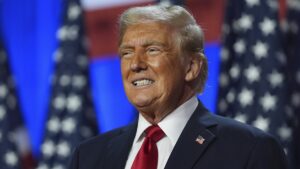
In a significant move to bolster transatlantic trade, US President Donald Trump and UK Prime Minister Keir Starmer announced a breakthrough tariff deal on May 8, 2025, aimed at reducing levies on select goods. The agreement, unveiled from the Oval Office with Starmer joining via teleconference, marks the first major trade pact since Trump imposed sweeping tariffs on global trading partners in April, dubbed “Liberation Day.” This deal not only signals the start of broader trade negotiations but also seeks to strengthen economic ties between the US and UK amid concerns over a global economic slowdown.

A Framework for Reciprocal Trade
The US-UK trade deal focuses on reducing tariffs and non-tariff barriers to enhance market access for both nations’ exporters. While the US will maintain its 10% baseline tariff on most British goods, the agreement includes targeted exemptions and reductions. Notably, the US will lower tariffs on UK steel and aluminum, creating a new “trading union” for these materials, and adjust Section 232 tariffs on UK autos. Under the deal, the first 100,000 vehicles imported annually from UK car manufacturers will face a 10% tariff, with additional vehicles subject to a 25% rate. In return, the UK will reduce its average tariffs on US goods from 5.1% to 1.8% and ease non-tariff barriers that have historically disadvantaged American products, particularly in agriculture and technology sectors.
“This is a really fantastic, historic day,” President Trump declared during the announcement, emphasizing the deal’s potential to open “a tremendous market” for American exporters. Prime Minister Starmer echoed the sentiment, noting that the agreement would “boost trade between and across our countries” and create jobs by expanding market access. The deal is projected to unlock $5 billion in new export opportunities for US farmers, ranchers, and producers, including $700 million in ethanol exports and $250 million in agricultural products like beef.
Navigating Global Economic Challenges
The timing of the US-UK trade deal is critical, as global markets have been rattled by Trump’s aggressive tariff policies. On April 2, 2025, the US imposed a 10% tariff on imports from most countries, alongside higher “reciprocal” tariffs on nations with significant trade surpluses. These measures, intended to address America’s $1.2 trillion goods trade deficit, triggered a sharp downturn in global stock markets and raised fears of a trade war. A subsequent 90-day pause on the higher reciprocal tariffs, announced on April 9, provided breathing room for negotiations, with the US-UK deal emerging as the first concrete outcome.
For the UK, the agreement is a strategic win in a post-Brexit landscape. Since leaving the European Union in 2020, the UK has sought to forge independent trade agreements to bolster its economy. The US is a key market for British exports, particularly cars (£6 billion annually) and steel. The deal’s tariff reductions on these sectors are expected to provide immediate relief to UK manufacturers, with shares in luxury carmaker Aston Martin rising 10% upon the announcement. However, the UK’s refusal to lower food safety standards—aligned closely with EU regulations—remains a sticking point, with American beef exports limited to producers meeting stringent UK requirements.
Key Provisions and Economic Impact
The US-UK trade deal includes several targeted provisions designed to balance economic benefits with national interests:
- Steel and Aluminum: The US will negotiate an alternative arrangement to its Section 232 tariffs, recognizing the UK’s efforts to combat global steel overcapacity. This move aims to create a secure supply chain and level the playing field for American producers.
- Automotive Sector: The tariff adjustment for UK car imports supports British manufacturers like Rolls-Royce, with tariff-free imports of engines and plane parts also included. US Commerce Secretary Howard Lutnick highlighted a forthcoming $10 billion purchase of Boeing planes as part of the deal’s economic ripple effect.
- Agriculture: The UK has agreed to streamline customs procedures and reduce non-tariff barriers, opening a $5 billion market for US agricultural exports. However, UK farmers will gain tariff-free quotas for 13,000 metric tonnes of beef exports to the US, a rare privilege shared by few countries like Australia.
- Technology and Digital Services: While the UK’s digital services tax, which generates £800 million annually from US tech giants like Google and Amazon, remains unchanged, discussions on easing its impact are ongoing. A proposed “technology partnership” focusing on AI, bioengineering, and quantum physics is expected to deepen bilateral innovation ties.
Economists caution that the immediate economic impact may be modest, with UK GDP gains estimated at just 0.07%. However, the deal’s long-term potential lies in its role as a framework for future negotiations. Posts on X reflect mixed sentiment, with some users praising the deal’s targeted exemptions and $6 billion in US tariff revenue, while others note its limited scope compared to pre-tariff trade levels.

Political and Diplomatic Context
The US-UK deal underscores the “special relationship” between the two nations, a bond President Trump emphasized during the announcement. Prime Minister Starmer’s conciliatory approach, including a February 2025 White House visit, has paid dividends despite criticism from some Labour MPs for aligning too closely with Trump’s policies. The deal’s announcement, timed with the 80th anniversary of Victory Day for World War II, carries symbolic weight, reinforcing shared history and economic security goals.
However, challenges remain. The US’s 10% baseline tariff, described by Trump as “set,” is unlikely to be lifted soon, and other trading partners may face higher tariffs, as Trump noted, “Some will be much higher because they have massive trade surplDesign and Build: The Pixel 9 Pro is praised for its design, with some users finding it more ergonomic than the Pixel 9 Pro XL. However, the glossy glass back of the Pixel 9 has been noted as a fingerprint magnet, which might be less of an issue with the matte finish on the Pixel 8 Pro.
Performance: The Pixel 9 series features Google’s Tensor G3 chipset, which is noted for handling everyday tasks and mobile gaming well. It also supports new software features like Audio Magic Eraser for video sound editing. Display: The Pixel 9’s display has been reviewed positively for its brightness, reaching up to 2,000 nits, and the 120 Hz refresh rate which contributes to smooth interactions and animations. Battery Life: Users have reported good battery life, with some able to extend usage over a day and a half under normal conditions, which is better than expected.





